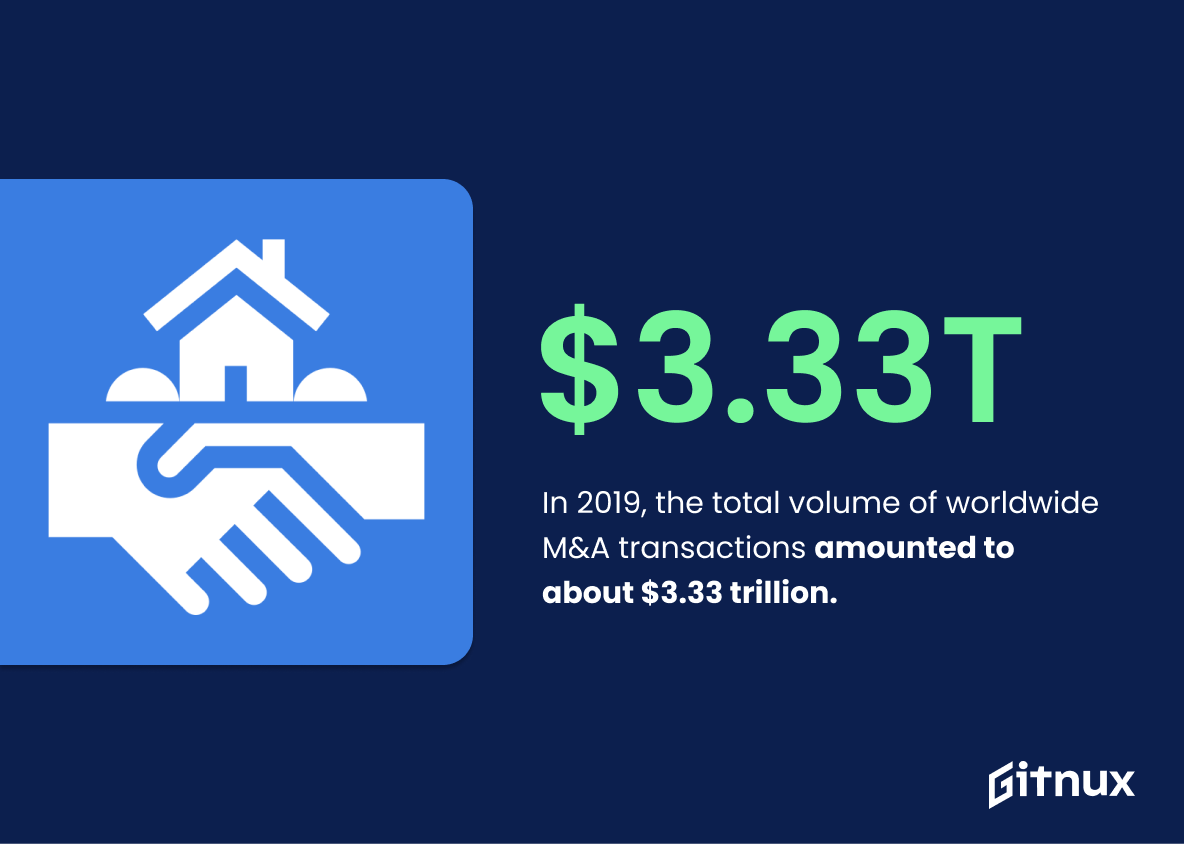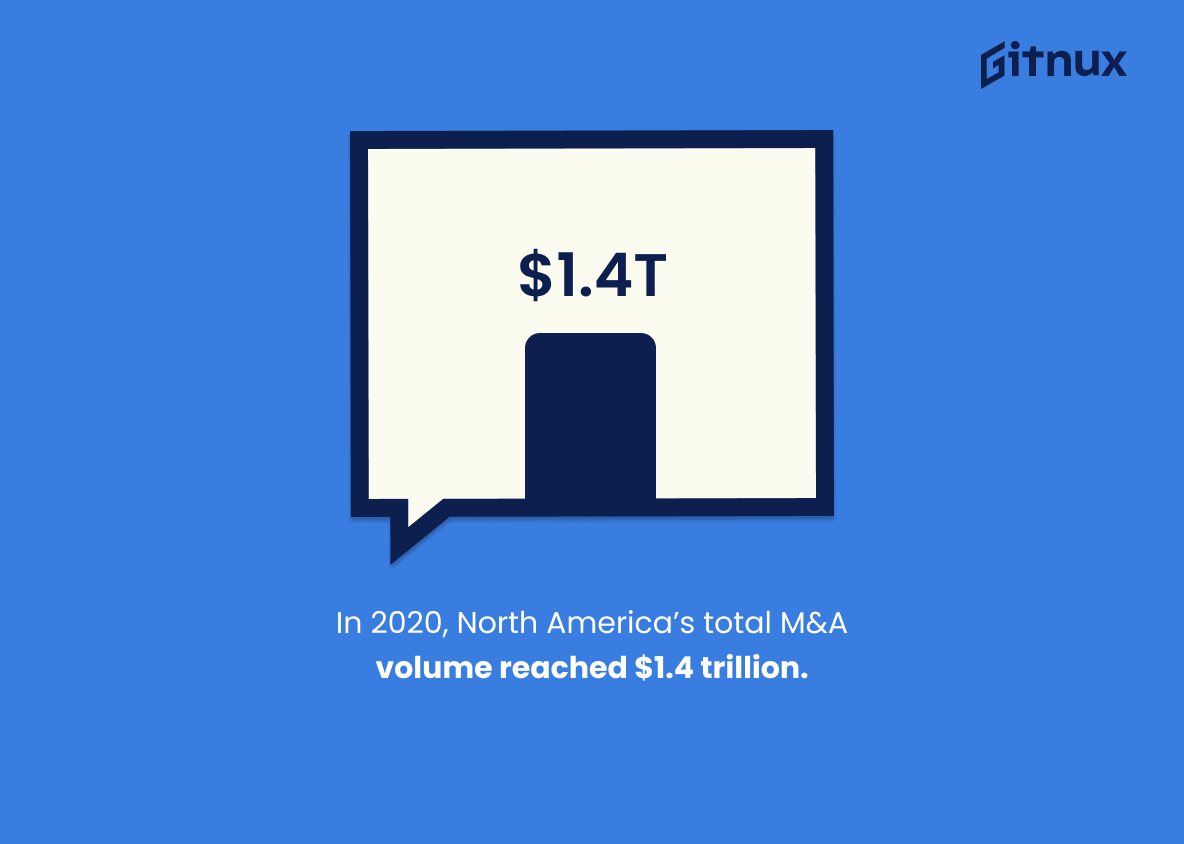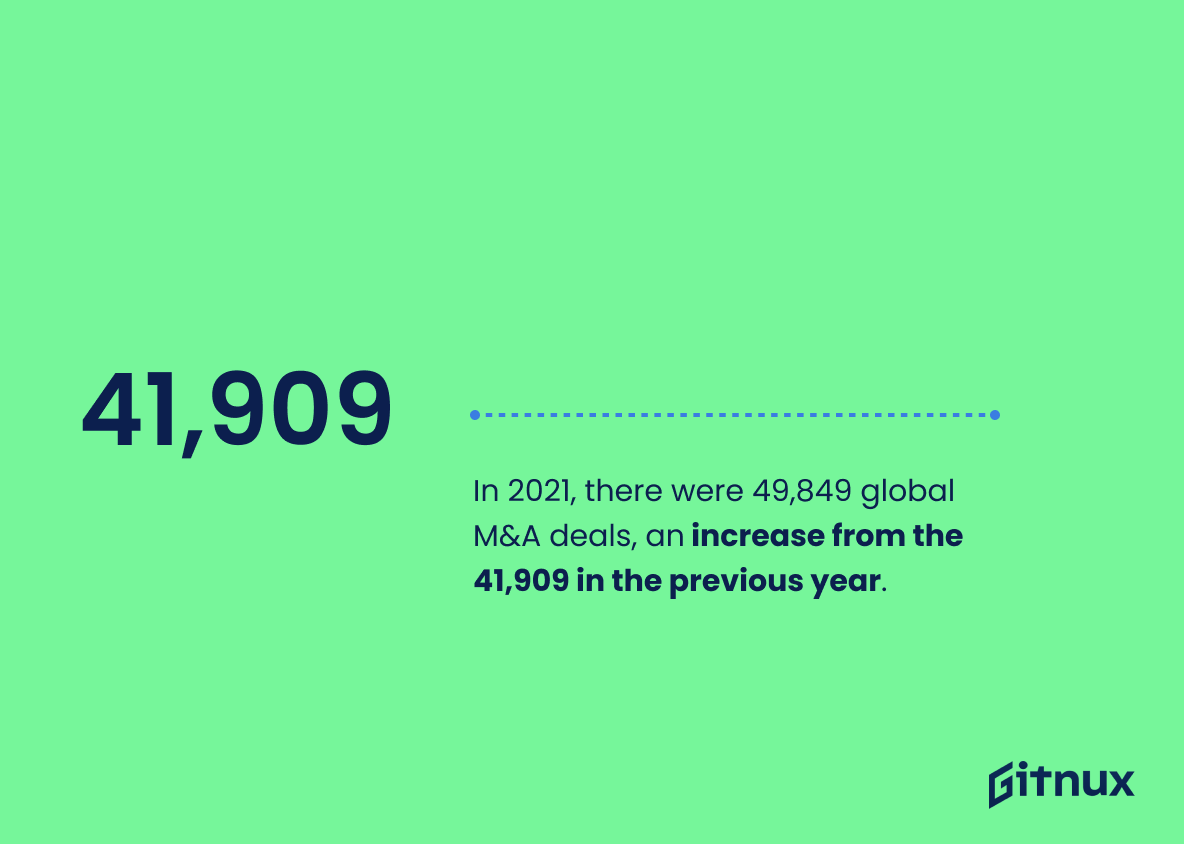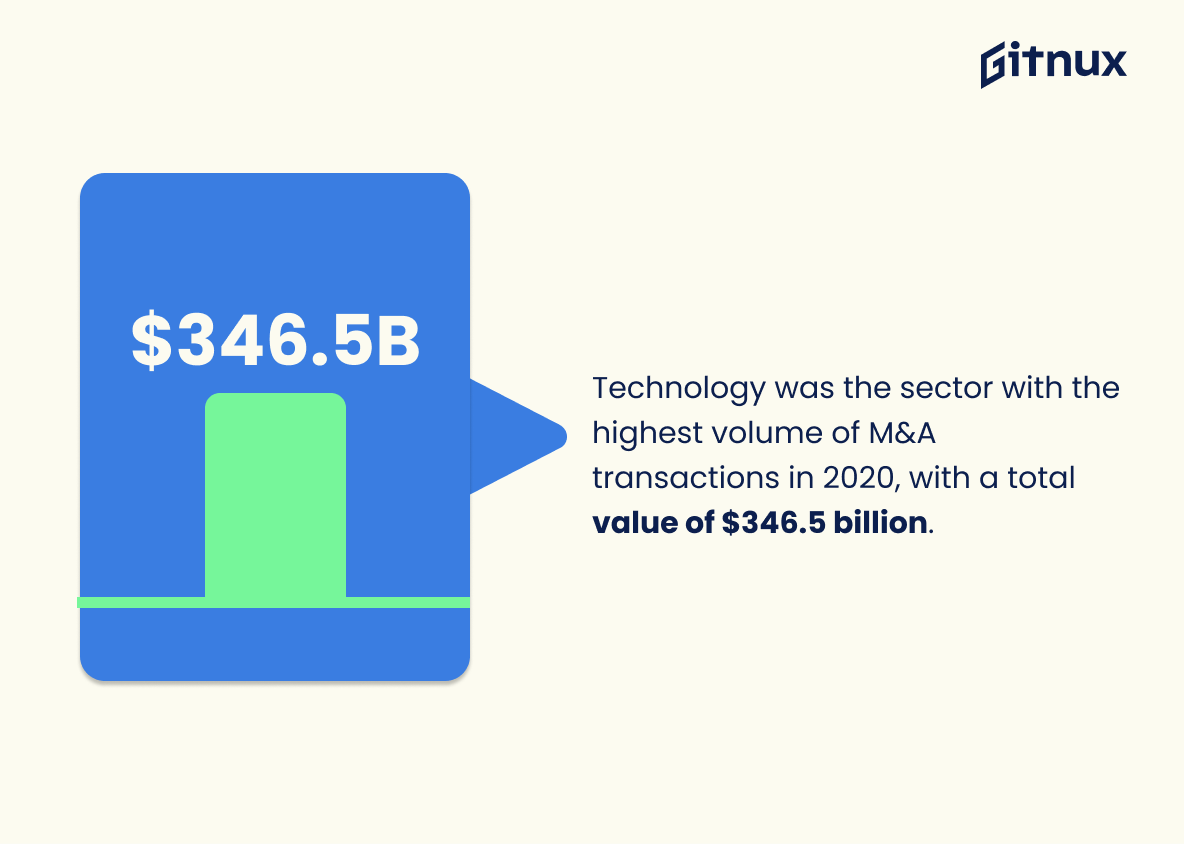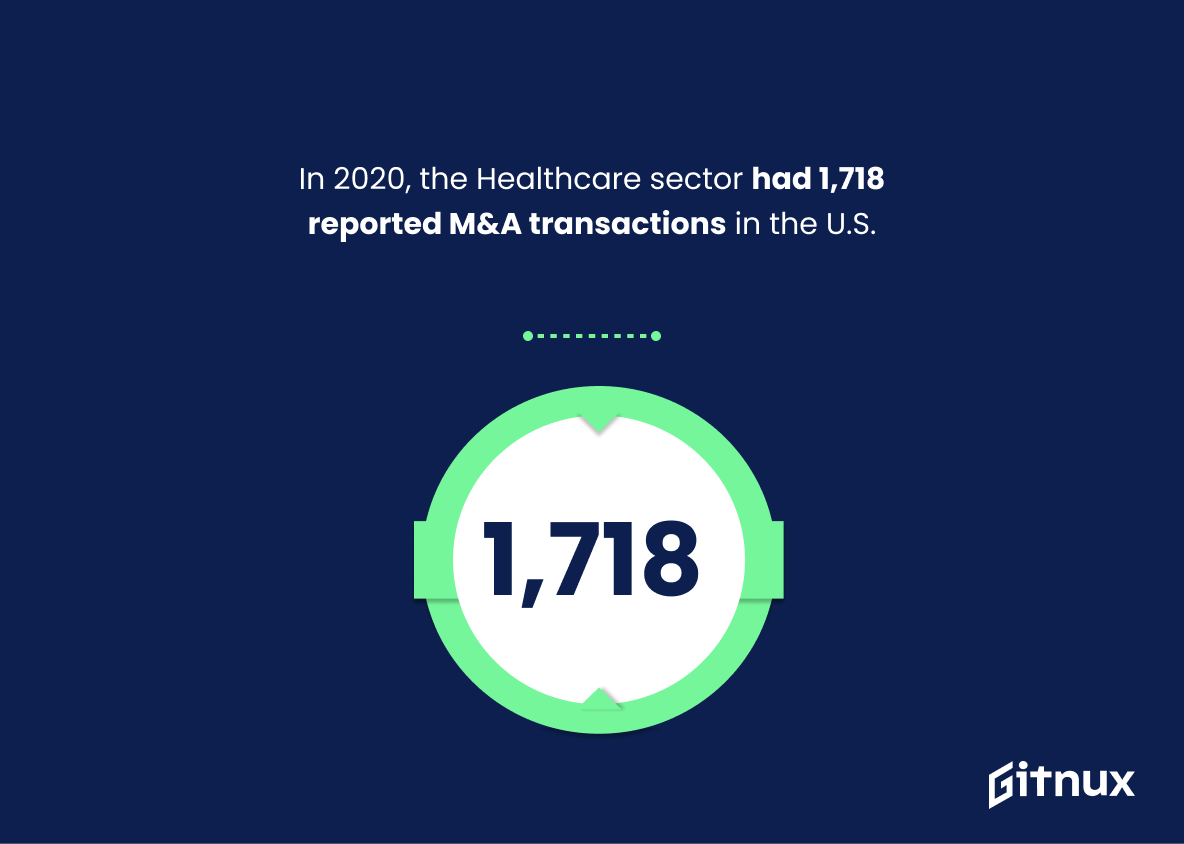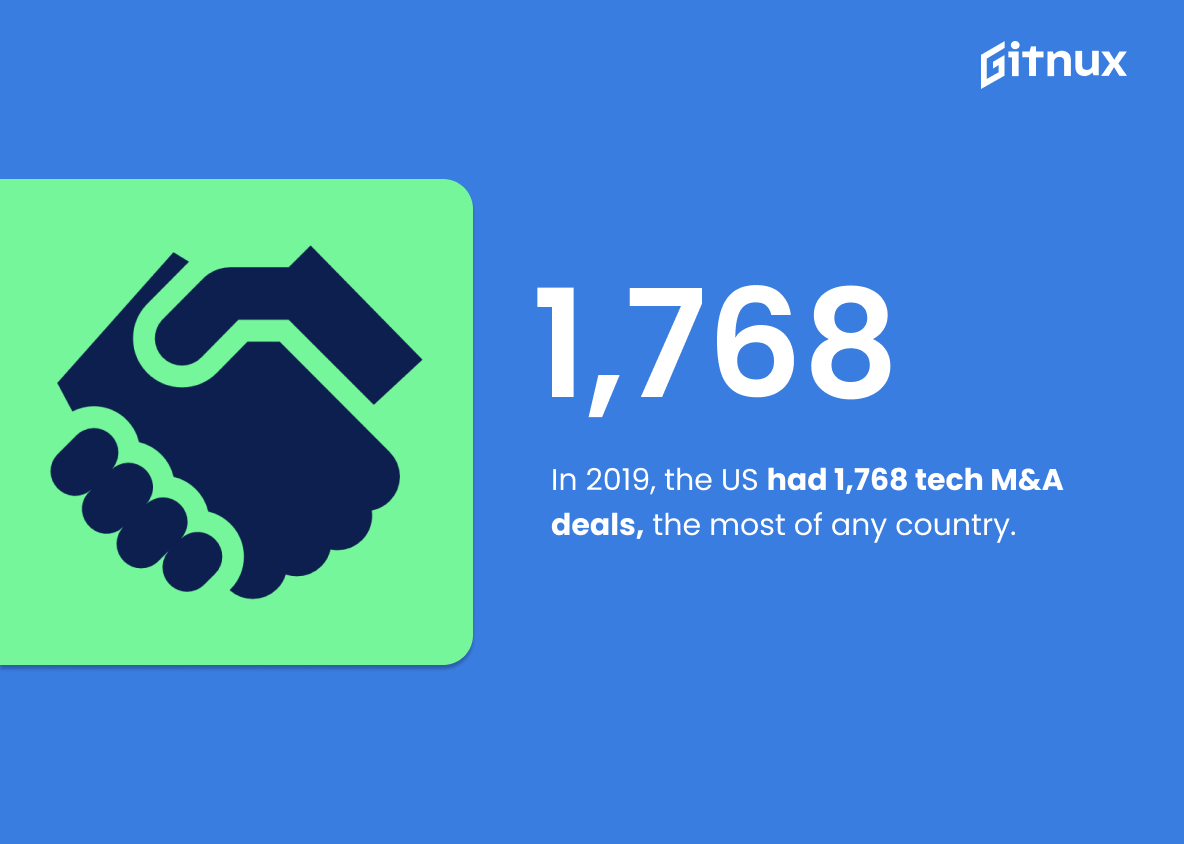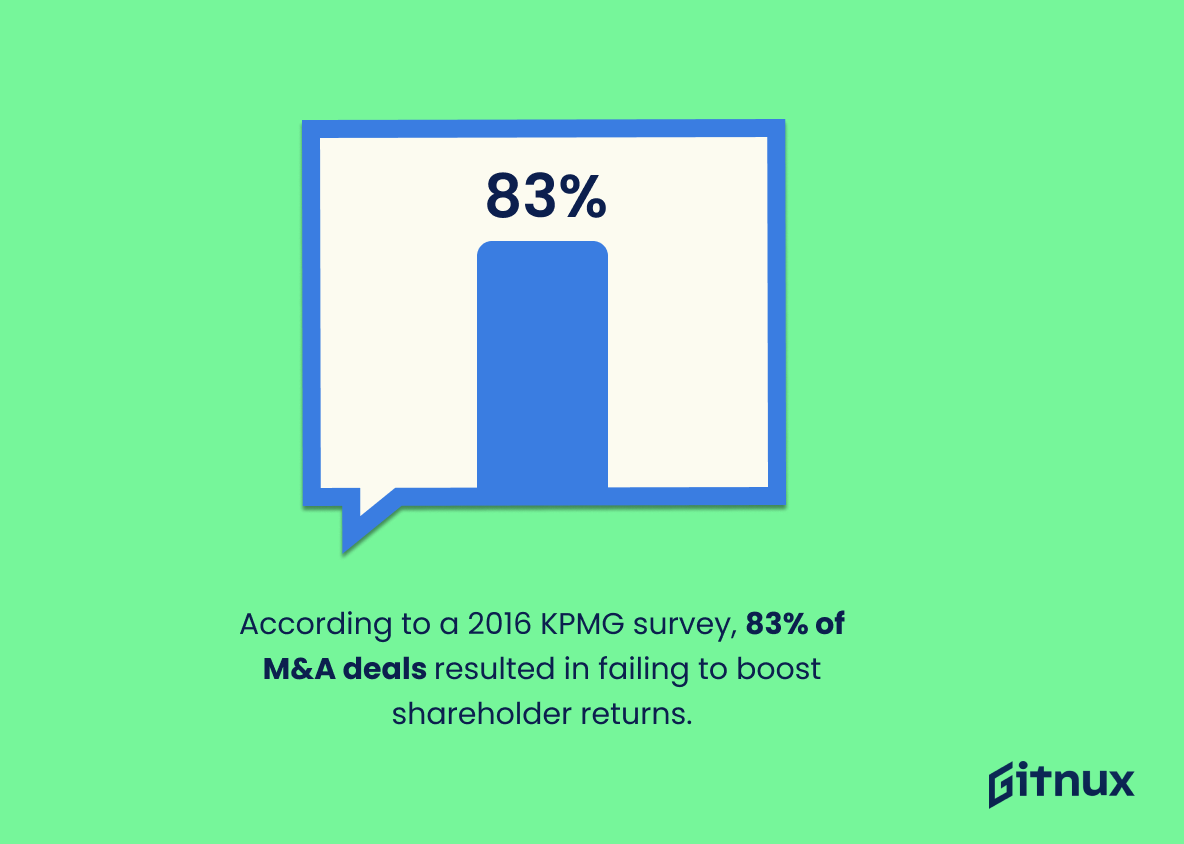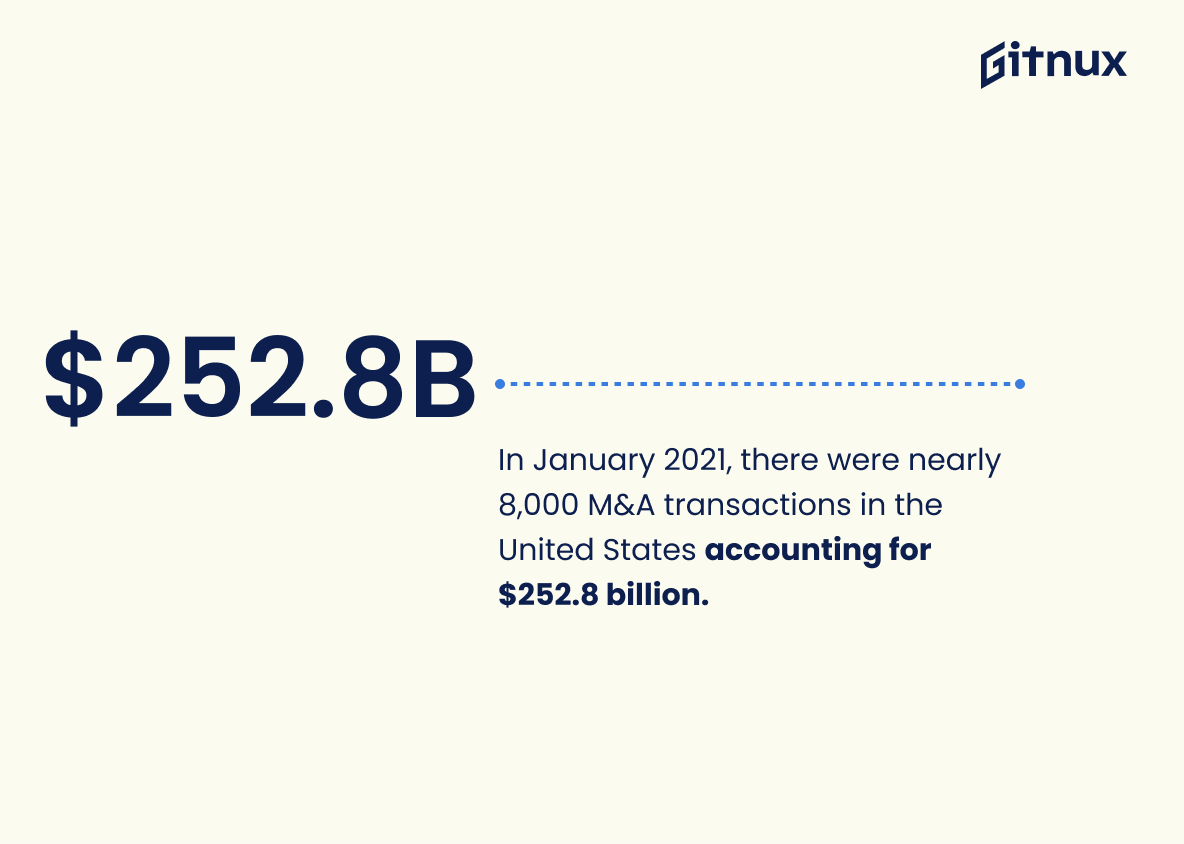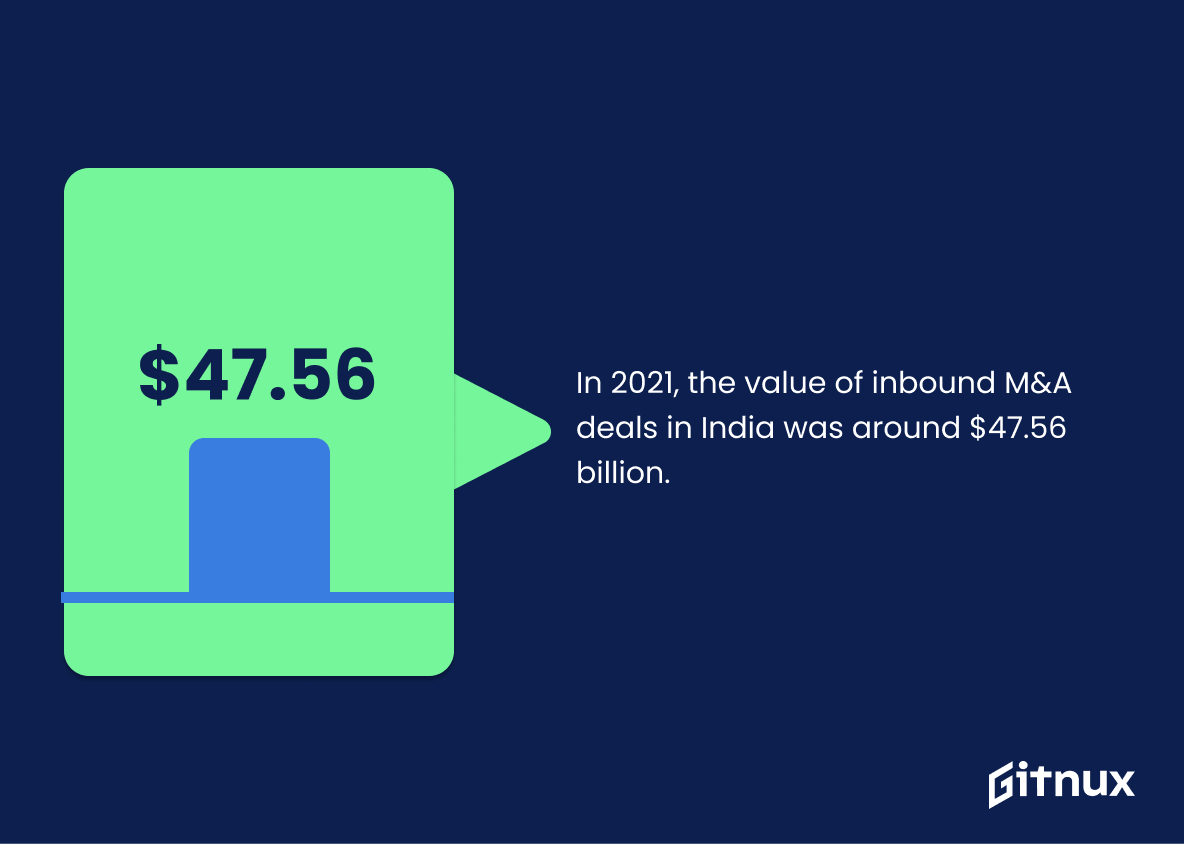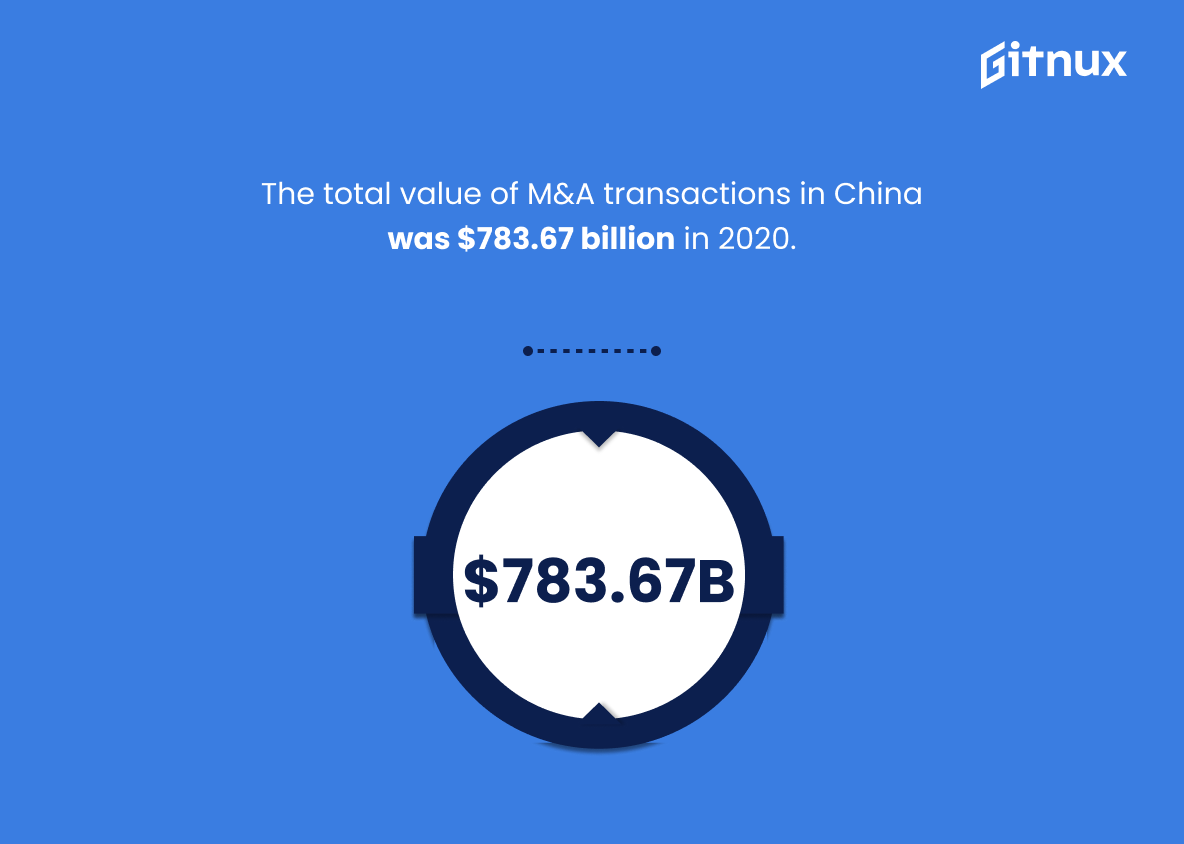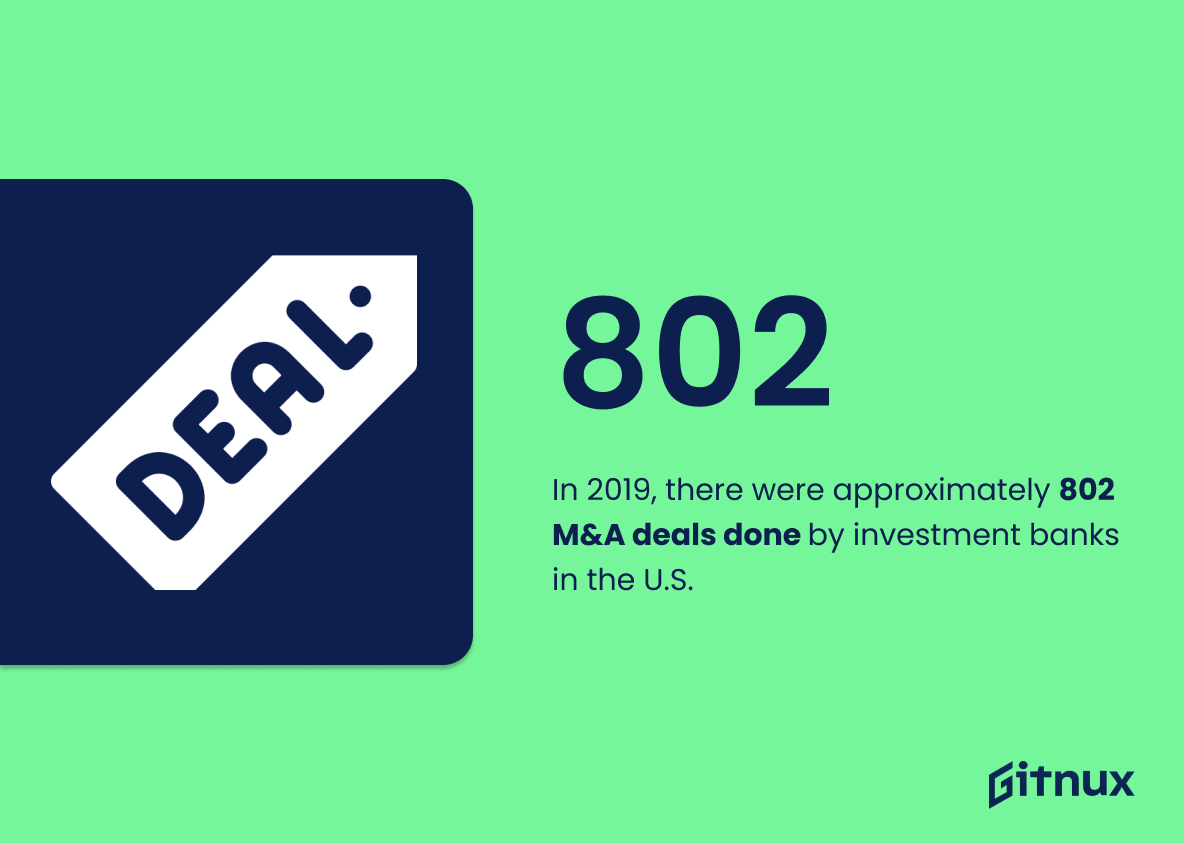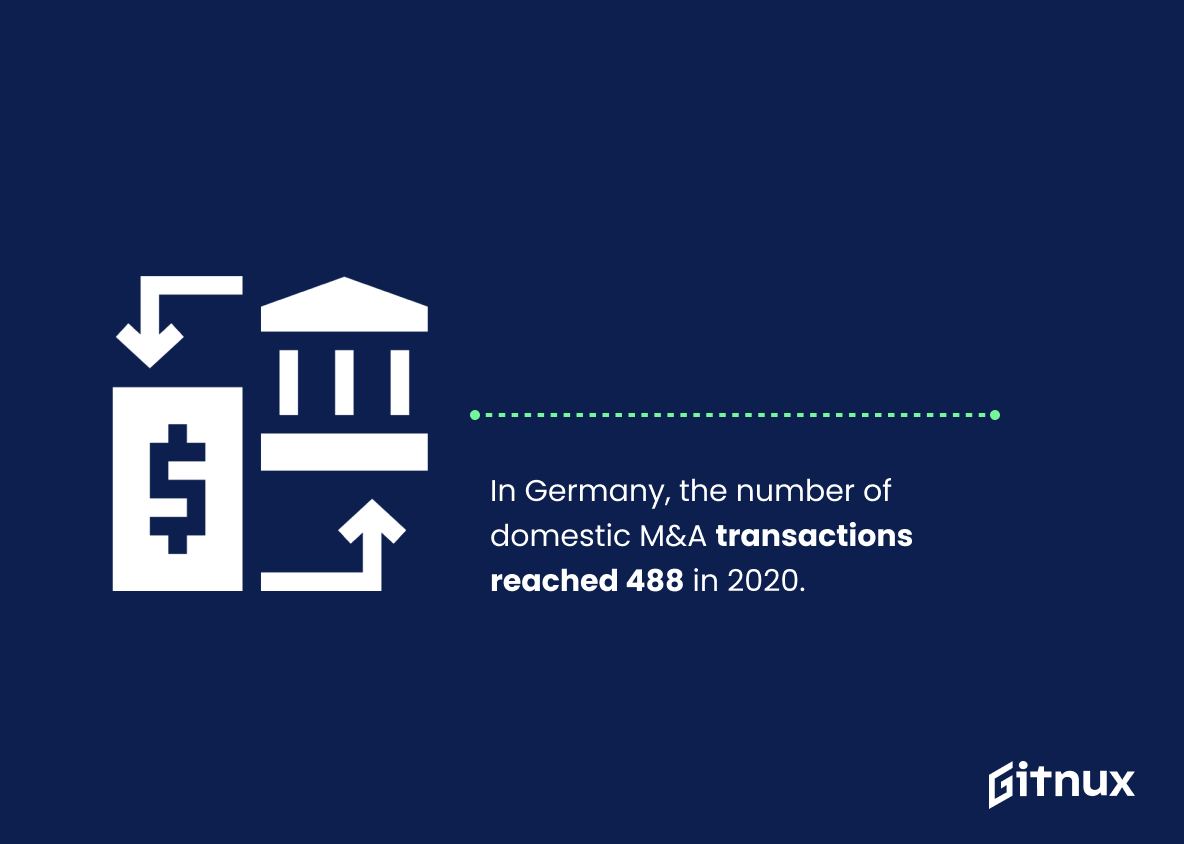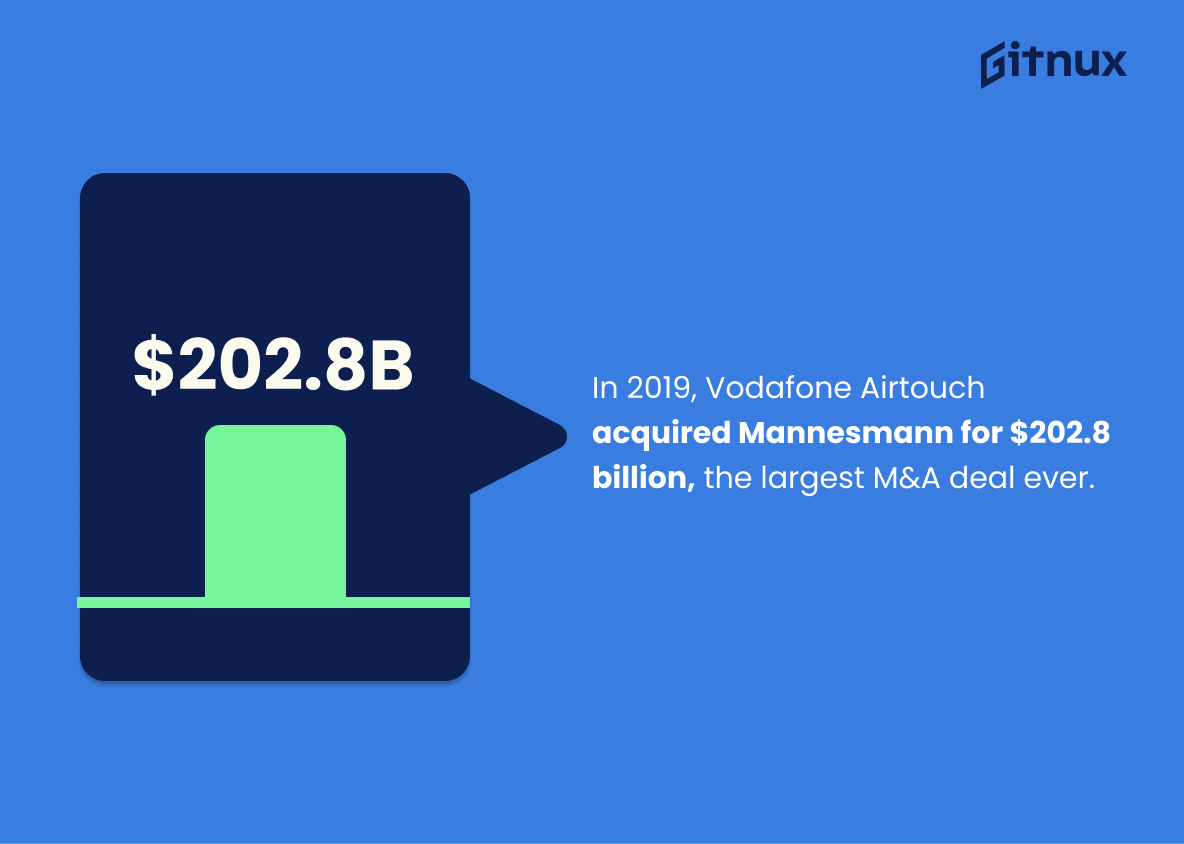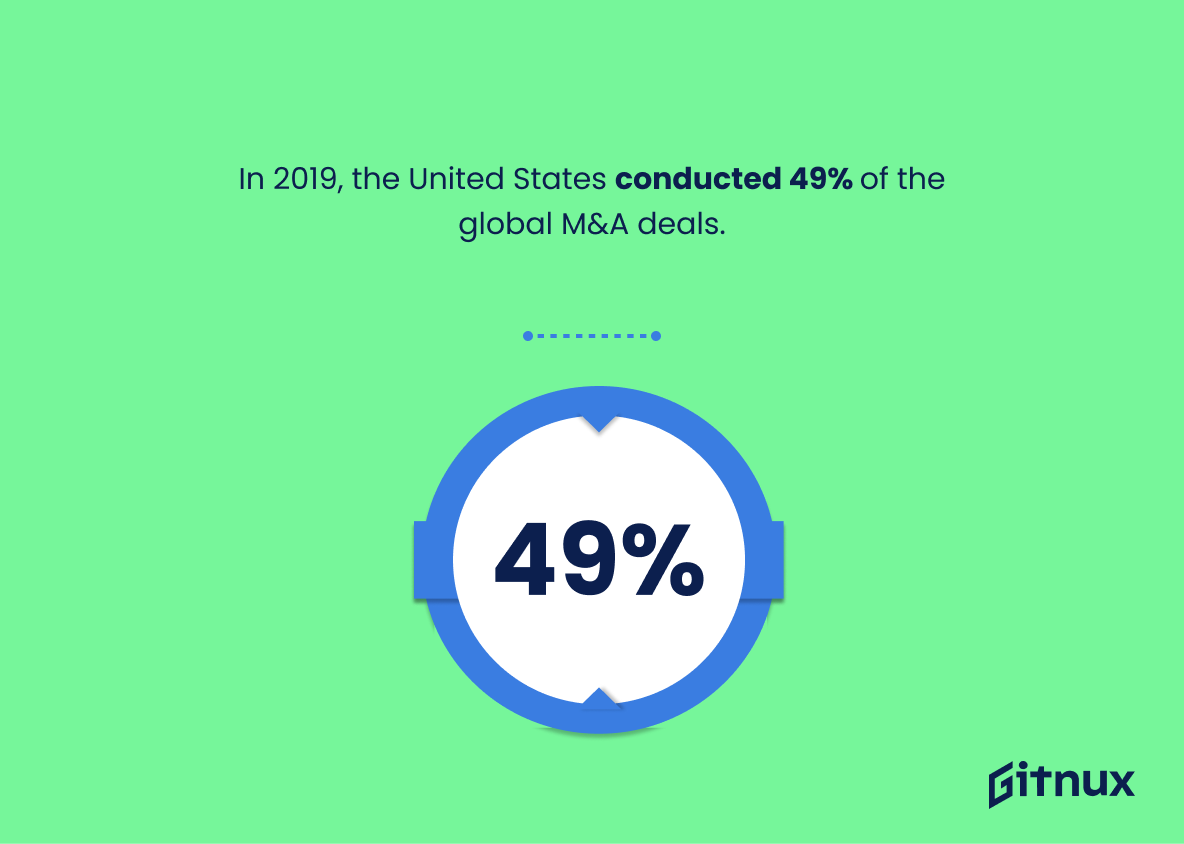In the fast-paced world of business, the strategic moves of mergers and acquisitions (M&A) can cause abrupt ripples in the global economic landscape. Our latest blog post takes you into the pulse of this corporate manoeuvring – delving deep into the captivating world of M&A statistics. From the biggest deals ever inked to the emerging trends of the future, we strive to shed light on how these corporate chess games are changing the face of global commerce. Whether you’re a business tycoon, an investor, or an economics enthusiast, understanding these statistics could be the key to unlocking new insights and perspectives.
The Latest Mergers And Acquisitions Statistics Unveiled
In 2019, the total volume of worldwide M&A transactions amounted to about $3.33 trillion.
Peeling back the layers of the global business landscape reveals the staggering figure of $3.33 trillion as the cumulative volume for worldwide Mergers and Acquisitions (M&As) transactions in 2019. This eye-opening statistic serves as a testament to the dynamism and sheer scale involved in the arena of M&As. By painting a comprehensive picture of the fiscal gravity of such transactions, it emphasizes the depth of M&As’ influence in shaping corporate structures, economics, and markets worldwide, thus illuminating an important facet of M&As’ narrative in our blog. Reading the pulse of the M&A landscape through such figures can enlighten stakeholders about strategic growth trends and the opportunities or risks that lie within them.
In 2020, North America’s total M&A volume reached $1.4 trillion.
Shining a spotlight on the storyline of Mergers and Acquisitions, the revelation that North America’s total M&A volume soared to a staggering $1.4 trillion in 2020 acts as a high-octane fuel driving the narrative of M&A industry dynamism. This colossal figure underscores the business world’s relentless pursuit of growth, expansion, consolidation, and diversification. In the canvas of M&A statistics, this trillion-dollar detail serves as a critical color palette, highlighting North America’s vitality and influence in the worldwide M&A framework while also setting a robust baseline for future industry forecasts and trend analyses.
In 2021, there were 49,849 global M&A deals, an increase from the 41,909 in the previous year.
Diving into the heart of the global financial landscape, one can discern the monumental impact of Mergers and Acquisitions (M&A). With an astounding number of 49,849 M&A deals worldwide in 2021, reflecting a significant rise from the 41,909 in the preceding year, it portrays the accelerating dynamism of the business world. This uptick underlines the steadfast interest and confidence of corporations in strategic alliances, and synergistic business integrations. Ripe with insights, this upward trajectory in M&A deal counts can serve as a potent indicator of the prevailing business climate, trends in sector-specific consolidations, as well as the lure of strategic growth opportunities through acquisitions. Drawing from this, the blog post can tease out not just the quantitative growth, but also the nuanced qualitative shifts in the M&A landscape.
Technology was the sector with the highest volume of M&A transactions in 2020, with a total value of $346.5 billion.
Highlighting the technology sector’s dominance in the M&A landscape during 2020, racking up deals worth a whopping $346.5 billion, provides a vivid snapshot of where the action is truly heating up. It gives a resounding testament to the undeniable influence the tech industry wields, and the confidence investors show in its potential. In a galaxy of numbers that make up the Mergers and Acquisitions statistics, this piece of data shines like a bright star, serving as a guiding light for future investments and industry analysis. Above all, it emphatically underscores the mantra of today’s business world – Technology is King.
In 2020, the Healthcare sector had 1,718 reported M&A transactions in the U.S.
Reflecting on the aforementioned statistic, we find that the tsunami of 1,718 M&A transactions in the Healthcare sector signal a transformative shift in the U.S. economy last year. Delving deeper, this reveals the sector’s resilience and its positioning as an M&A hotspot amid a global pandemic. This unexpected upswing draws a spotlight on the surge in healthcare demands, heightened market activities, and fueled investments in technological advancements. By underlining this angle in a blog about Mergers and Acquisitions statistics, readers are privileged with insights into sector-specific trends and dynamics, allowing them to understand an authentic picture of the landscape, rather than a broad conceptual overview of M&A.
As of 2019, the U.S. accounted for the most tech M&A deals, with 1,768 transactions.
Plunging headfirst into the ocean of Mergers and Acquisitions Statistics, one cannot swim by the gargantuan whale that is the U.S., leading the school with a colossal 1,768 tech M&A transactions in 2019 alone. This towering figure paints a vivid picture of the dynamism and volatility that fuels the tech sector, capturing the U.S. business landscape’s intimate dance with innovation and consolidation. The statistic demonstrates the continued strength and strategic adaptability of U.S. tech companies, shaping a formidable industry capstone in the constantly evolving world of business mergers and acquisitions. Moreover, the exponential trajectory of tech M&A activity reflected by this data sheds a powerfully illuminating light on the broader economic trends and potential shifts in the global tech industry. Now, that’s a stat with a story to tell.
According to a 2016 KPMG survey, 83% of M&A deals resulted in failing to boost shareholder returns.
The statistic from the 2016 KPMG survey serves as a striking harbinger for businesses considering mergers and acquisitions (M&A). With 83% of M&A deals not augmenting shareholder returns, this fact paints a sobering reality of the potential risk embedded in the alluring M&A landscape. It underscores a critical counterpoint in an M&A driven strategy – despite potential benefits like diversified business operations and reduced business risks, companies must understand that the journey to shareholder value creation post-M&A isn’t necessarily a given. Therefore, this statistic forms a pivotal part of any in-depth exploration of M&A, providing readers with a balanced perspective and food for thought for their strategic decision-making process.
In January 2021, there were nearly 8,000 M&A transactions in the United States accounting for $252.8 billion.
Using the lens of statistical interpretation, we can gauge that the data point – ‘In January 2021, nearly 8,000 M&A transactions in the United States accounted for $252.8 billion’ – provides a substantial augmentation to our understanding of the Mergers and Acquisitions landscape. The value it brings to a blog post on M&A statistics is multi-layered.
First, it serves as a concrete proof-point illuminating the sheer volume and monetary impact of M&As in just one month of the year in the United States. A figure like $252.8 billion speaks volumes about the enormity and influence of the M&A market.
Second, the temporal dimension attached to this statistic adds a dynamic aspect to the analysis. It allows readers to understand the level of M&A activity specific to January 2021, and possibly compare it with other time periods to discern trends or anomalies.
Lastly, such a statistic underscores the importance of M&As as a key strategic growth strategy employed by companies in the U.S. The impressive number of transactions demonstrates the high degree of corporate confidence in leveraging M&As to achieve their business objectives.
Thus, this statistic does not merely take up space in the post, but rather plays a pivotal part in delivering a comprehensive and insightful narrative on Mergers and Acquisitions.
In 2021, the value of inbound M&A deals in India was around $47.56 billion.
Highlighting the figure of $47.56 billion in inbound M&A deals in India paints a vivid picture of the vital role India plays in the global economic landscape. This figure not only showcases the robust market attraction the Indian economy exudes, but it also emphasizes the growing confidence of foreign investors in the country. It offers invaluable insight into the constantly evolving and dynamic nature of M&A activity across borders, serving as a concrete testament to the vibrancy and potential of the Indian market. This data point can shape our understanding of the economic trends and forces driving Mergers and Acquisitions, speaking volumes about the future of the global business arena.
The total value of M&A transactions in China was $783.67 billion in 2020.
In the dynamic landscape of Mergers and Acquisitions, complexities abound and understanding the bigger picture can often be challenging. Looking closely at the astounding figure of $783.67 billion, the total value of M&A transactions in China for 2020, offers an exceptional point of view. This commanding number shines a spotlight on the mighty role China plays in the global M&A market, underlining its significance and sway. This figure is not just a statistic; it’s a testament to China’s rapidly growing economy, powerful corporates, and strong market presence. Hence, for any reader diving into statistics on Mergers and Acquisitions, such a significant insight is indispensable to grasp the true scale and potential of the global M&A sphere.
In 2019, there were approximately 802 M&A deals done by investment banks in the U.S.
Digesting the intriguing data that in 2019, American investment banks orchestrated approximately 802 M&A (Merger and Acquisition) agreements, brings to light the vital role of these financial institutions in facilitating economic activity. These figures not only demonstrate the vibrant dynamism within the U.S. corporate landscape, but also underpin the intense prevalence of strategic consolidation in search for profitability and growth. Within an exploration of Mergers and Acquisitions statistics, this datum both sets a context, and serves as a robust benchmark against which we judge the intensity and trajectory of M&A activities over time.
Reported M&A transactions in the IT sector in the US in 2020 numbered 5,510.
Delving into the sphere of Mergers and Acquisitions (M&A) in the IT sector, the numeric figure of 5,510 reported transactions in the US during 2020 paints quite a vivid picture. It radiates the vibrancy of the sector, highlighting its dynamism and resilience, despite economic uncertainties propelled by the global pandemic. This figure serves as an indicator of the sector’s evolutionary pace, whereby companies strategically choose to merge or acquire to foster growth, innovation, and leverage competitive advantage. These numbers in the backdrop of a M&A statistics blog post not only magnify the sector’s magnitude but also underscore the growing significance of M&As as a strategic pathway within the bustling IT industry.
In Germany, the number of domestic M&A transactions reached 488 in 2020.
Anchoring our discussion with the revelation that Germany saw 488 domestic M&A transactions in 2020 offers an illuminating snapshot into the robust heartbeat of the country’s M&A landscape. This commanding figure not only underscores the resilience of German corporations amidst dynamic market trends and uncertain times, but it also punctuates the intrinsic role M&A plays in bolstering, reshaping, and even, at times, redefining the nation’s economic structure. Furthermore, plunging into this numeric depth can help us fathom the underlying reasons behind such activity, reveal industry-specific patterns, and ultimately navigate the choppy waters of future M&A trends.
As of 2019, the largest ever M&A deal was the acquisition of Mannesmann by Vodafone Airtouch for approximately $202.8 billion.
Highlighting the colossal acquisition of Mannesmann by Vodafone Airtouch for a staggering $202.8 billion in 2019, serves as a vivid depiction of the magnitude these corporate maneuvers can reach. In the grand tableau of mergers and acquisitions, this instance crystallizes the potential for incredibly high-stakes bets in the conglomerate business world. It provides a bellwether for the sheer expanse and prospective fiscal payoff that can be achieved through strategic amalgamations. This commentary underlines the expansive capacity of mergers and acquisitions, setting a benchmark for future endeavors. Consequently, it propels the narrative of our blog post on Mergers and Acquisitions Statistics, punctuating it with an irrefutable example of this phenomenon’s mindboggling scale.
In 2019, the United States conducted 49% of the global M&A deals.
Painting a vivid picture of the bustling M&A landscape, the striking revelation that, in 2019, the United States was the stage for nearly half of all global M&A transactions gives you insurmountable evidence of its dominance. In the elaborate dance of corporate mergers and acquisitions, this statistic shines a spotlight on the commanding role the U.S. plays, bringing home the point that it’s a crucial hub in this global game. This single piece of data acts as a magnet, drawing in global companies to consider the U.S market seriously when devising their M&A strategies. Simultaneously, it sends a strong signal to M&A aspirants to refine their skill-set, with a clear realization of where most action unfolds.
M&A activity in the U.S. retail industry had $17.4 billion in transaction value in 2021.
Interpreting the fluid and fast-paced world of mergers and acquisitions can often be a complex dance, especially when it comes to the U.S. retail industry. With an overwhelming transaction value of $17.4 billion in 2021, this fact is an intriguing highlight in the larger M&A narrative. This vibrant figure intricately ties into discussions around the vitality of the retail industry and provides a quantifiable measure of market movements and strategic shifts. Such an unmistakable tremor in the economic landscape has potential implications throughout the sector, offering unique insights that illuminate the profitability, resilience, and adaptation synonymous with the retail industry.
In 2021, there were 219 M&A deals in the U.S. marketing and advertising industry.
Understanding the landscape of Mergers and Acquisitions (M&A) can be significantly enriched by examining specific examples. Illustrating with the data point that there were 219 M&A deals in the U.S marketing and advertising industry in 2021 highlights the dynamism of this sector. Such an impressive count reflects rich activity levels and suggests that this sector is deemed particularly valuable by investors, or has potential for considerable growth, factors which may be attributed to technology advances or the evolving consumer behavior, for instance. Hence, embedding such a statistic in a blog post about M&A offers a concrete context for theoretical discussions, making them more relevant and compelling to the readers.
53% of M&A dealmakers ramped up their use of data due to COVID-19, according to a 2021 EY survey.
Highlighting the statistic ‘53% of M&A dealmakers increased data usage due to COVID-19, as reported in a 2021 EY survey’, provides a rich context that underpins the shifting nature of the M&A landscape. Amid the chaos introduced by the pandemic, dealmakers are pivoting towards a more data-driven approach. This pivot points to a critical trend towards data dependency and digitization. Moreover, it casts a vibrant spotlight on how dealmakers are renovating their strategies under the current circumstances, leveraging data to make sounds and strategic decisions, despite the complexities introduced by the pandemic. It’s a testament to the industry’s resilience, adaptability and the rising prominence of big data in shaping the future of Mergers and Acquisitions.
92% of private company respondents found post-merger integration challenging, according to the Deloitte 2020 Private Company M&A survey.
Delving into the world of mergers and acquisitions, one cannot shake off the grim revelation from the Deloitte 2020 Private Company M&A survey. It unveils that an overwhelming 92% of private company respondents depict post-merger integration as a challenging task. This figure, seemingly just a number, carries profound implications for businesses.
Firstly, it underscores the emergent need for meticulous planning during the post-merger phase; from assimilating cultures to consolidating operations and strategic initiatives, the integration stage, it seems, is indeed a tough nut to crack. This implies that M&A’s success is not only about closing the deal but equally about the integration phase that follows.
Secondly, it provides a reality check for ambitious companies, telling them to prepare well for the hurdles that lie ahead post-merger. M&A propositions might dazzle with their promise of growth, strategic advantage, or increased market share, yet the realities post-union can be daunting if not properly managed.
Lastly, for readers dissecting M&A insights and trends, this statistic serves as an ominous siren, resounding the importance of readiness, diligence, and unwavering commitment in the post-merger integration phase—the arena where the battle of M&A success is ultimately won or lost.
During 2021, the UK saw 1895 M&A deals, which was a record high.
The revelation of the UK witnessing 1895 M&A transactions in 2021, setting a new record, offers a fascinating dimension to the narrative of Mergers and Acquisitions statistics. It galvanizes an understanding of the magnitude, momentum, and moods shaping the M&A landscape, particularly in the throbbing heart of Europe’s finance and trade scene – the UK. This impressive number not only indicates a vigorous market for corporate control but also, subtly underscores how firms are optimising their strategies in the face of uncertainties. As an evident trendsetter, the UK’s booming M&A activity in 2021 can serve as a guiding light for anticipating future patterns, setting benchmarks, and refining strategic decisions. Indeed, this figure is not merely a statistic, it’s a revelation from the pulsating heart of the M&A world, echoing the chants of growth, change, and adaptability.
Conclusion
In a business world marked by rapid innovation and change, mergers and acquisitions remain central to companies’ growth and strategic plans. The statistics show that while there may be fluctuations in M&A activity due to factors like economic cycles or global events, there is an enduring trend of companies leveraging M&A to achieve various strategic objectives. This includes tapping into new markets, diversifying product lines, and gaining a competitive advantage. Understanding M&A statistics provides critical insights into the pulse of the global economy, driving trends, and potential future shifts in various industries. As we progress into the future, these statistics will continue to serve as pivotal information in making informed business decisions in the M&A landscape.
References
0. – https://www.www.statista.com
1. – https://www.www.forbes.com
2. – https://www.www2.deloitte.com
3. – https://www.www.ey.com
